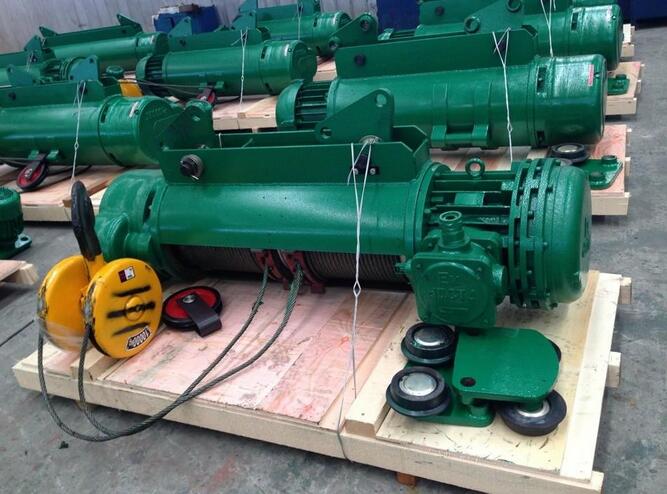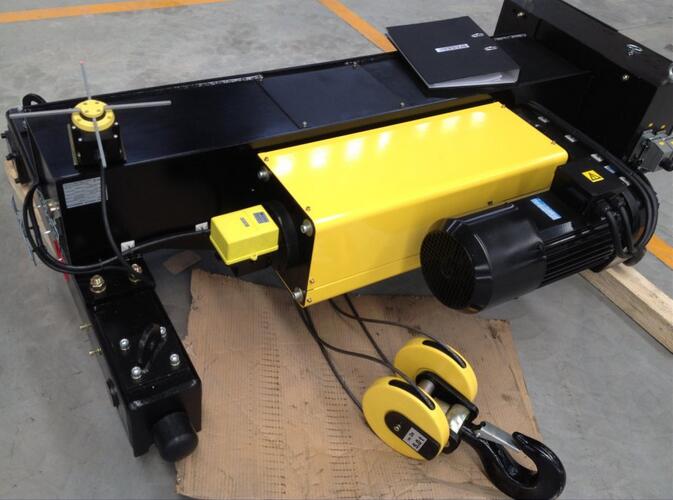Electric hoists are commonly used in industrial applications. Typically, they are attached to movable trolleys which, in turn, are attached to overhead beams or girders. Together, these three components function as an overhead crane, allowing workers to lift and move incredibly heavy items with minimal effort.
At the heart of any overhead crane is the hoist. The hoist is responsible for lifting the item up off of the ground and into the air. In order to understand how a 10-ton electric hoist is able to lift such heavy loads, you first need to understand a little bit more about the internal components (componente) of a hoist.
The lifting power of a hoist really comes down to physics (a la física). To begin with, the hoist is positioned directly above the item that it is going to be used to lift. A chain or cable, known as the load chain, is attached to the load using a hook.
Once the load is securely attached, the hoist is powered on. An electrically powered wheel begins to spin. This wheel is connected to a series of gears that progressively have fewer and fewer teeth. As the force of the spinning wheel is transferred from one gear to the next, it is exponentially multiplied.
By the time it reaches the final gear, the force of the original spinning wheel has been highly concentrated. This force is then used to begin wrapping the lifting chain or cable around a drum or raising it up on a pulley. This begins to lift the load up off of the ground.
Because of the configuration of the gears within the hoist, the relatively small amount of force that is provided by using electricity to spin the original wheel or gear is able to be concentrated into a tremendous amount of force capable of lifting 10 tons of weight or more up off of the ground.

Once the load has been lifted into the air, it is then usually transported to a different part of the facility using a trolley (Un carro). In the case of a 10-ton crane, the trolley is usually powered by electricity. Once the load is properly positioned in the new location, it can then be lowered back to the ground.
Understanding how a 10-ton electric hoist is able to lift such heavy loads starts by first understanding the inner workings of a hoist. The tremendous lifting power of the hoist comes from its ability to concentrate the force that is provided by the electric motor. In essence, this allows a very small amount of force to be used to lift incredibly heavy loads.
Electric hoists are most commonly used in industrial applications. They can be valuable additions to any facility that specializes in manufacturing, shipping, or other industries where heavy items need to regularly be moved from one area to another. Without these cranes, it would be far more difficult for these types of businesses to get their work done quickly and efficiently.
